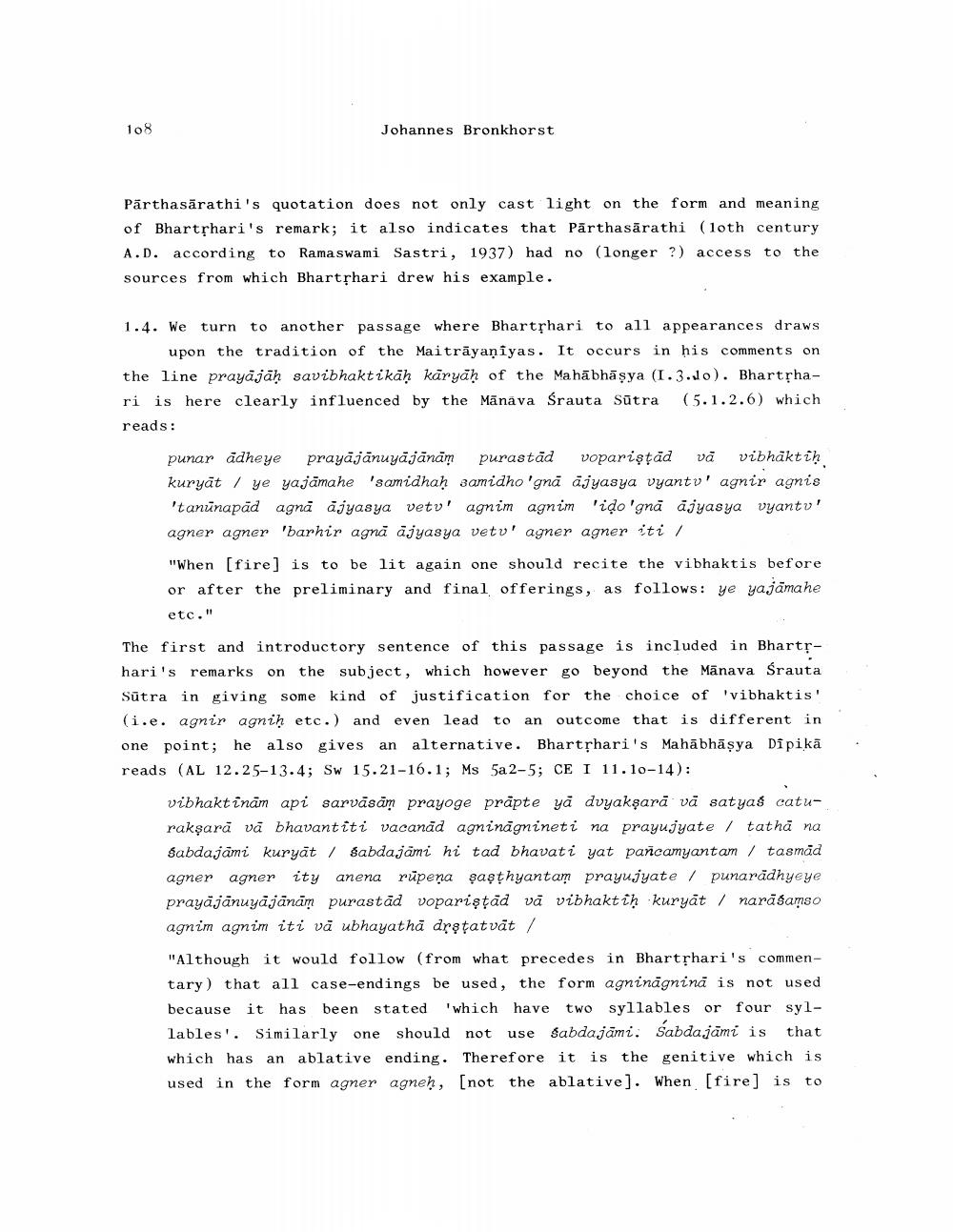Book Title: Studies On Bhartrhari Author(s): Johannes Bronkhorst Publisher: Johannes Bronkhorst View full book textPage 8
________________ 108 Johannes Bronkhorst Pārthasārathi's quotation does not only cast light on the form and meaning of Bhartshari's remark; it also indicates that Pārthasārathi (loth century A.D. according to Ramaswami Sastri, 1937) had no (longer ?) access to the sources from which Bhartshari drew his example. 1.4. We turn to another passage where Bhartshari to all appearances draws upon the tradition of the Maitrāyaṇiyas. It occurs in his comments on the line prayājāḥ savibhaktikāḥ kāryān of the Mahābhāşya (1.3.1o). Bhartshari is here clearly influenced by the Mänava Srauta Sūtra (5.1.2.6) which reads: punar adheye prayājānuyājānām purastād vopariştad vā vibhäktih kuryāt / ye yajāmahe 'samidhaḥ samidho 'gna ajyasya vyantu' agnir agnis 'tanunapad agna ajyasya vetv' agnim agnim 'ido 'gna ajyasya vyantu' agner agner 'barhir agnă ajyasya vetu' agner agner iti / "When [fire] is to be lit again one should recite the vibhaktis before or after the preliminary and final offerings, as follows: ye yajāmahe etc." The first and introductory sentence of this passage is included in Bhartshari's remarks on the subject, which however go beyond the Mānava Srauta Sūtra in giving some kind of justification for the choice of 'vibhaktis' (i.e. agnir agnih etc.) and even lead to an outcome that is different in one point; he also gives an alternative. Bhartshari's Mahābhāşya Dipikā reads (AL 12.25-13.4; Sw 15.21-16.1; Ms 5a 2-5; CE I 11.10-14): vibhaktinām api sarvāsām prayoge prāpte yā dvyakşarā vā satyas caturakşarā vā bhavantiti vacanād agnināgnineti na prayujyate / tatha na Sabdajāmi kuryat / Sabdajāmi hi tad bhavati yat pañcamyantam/ tasmad agner agner ity anena rūpena şaşthyanta prayujyate / punarādhyeye prayājānuyajānam purastād vopariştäd vă vibhaktih kuryāt / narāśamso agnim agnim iti vā ubhayatha dretatvāt / "Although it would follow (from what precedes in Bhartshari's commentary) that all case-endings be used, the form agninagnina is not used because it has been stated 'which have two syllables or four syllables'. Similarly one should not use sabdajāmi. Sabdajāmi is that which has an ablative ending. Therefore it is the genitive which is used in the form agner agneh, [not the ablative]. When [fire] is toPage Navigation
1 ... 6 7 8 9 10 11 12 13 14 15 16 17
